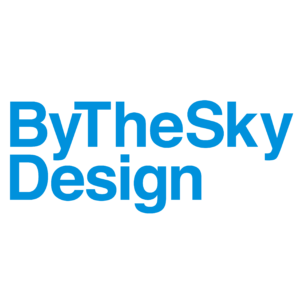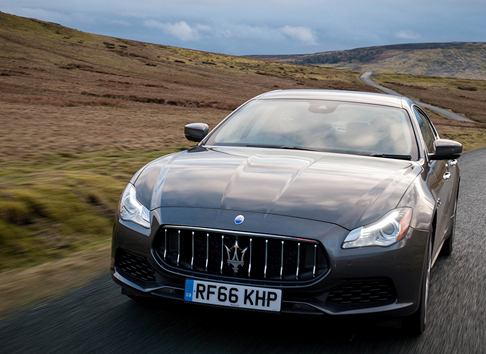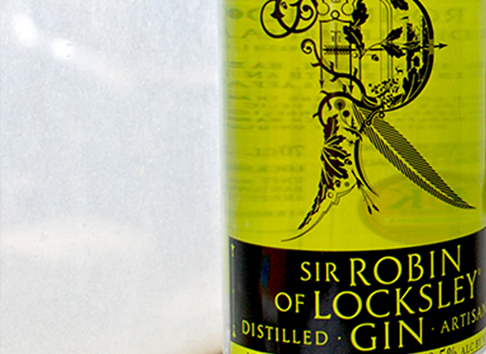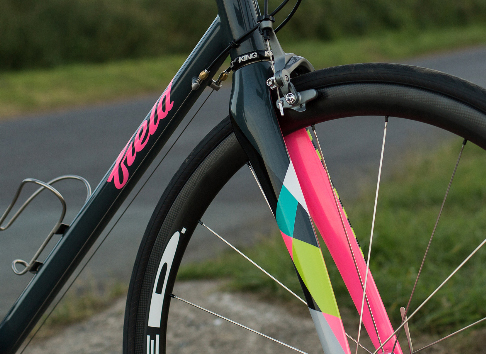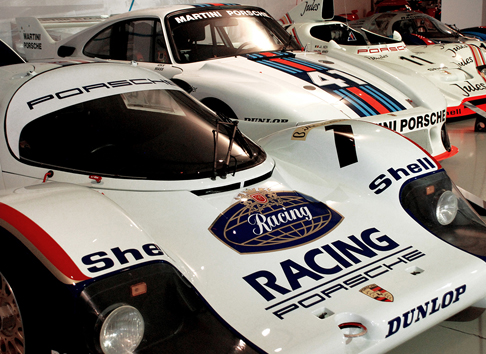Designing Lexus
A rare look inside the secretive world of Lexus design
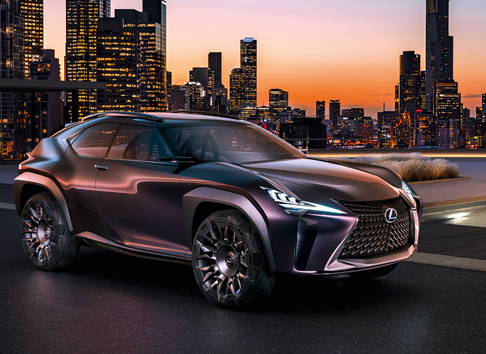
We were kindly given an invitation by Lexus to take a rare look inside their secretive design facility tucked away in the hills above Nice. Named ED2, the facility is an advanced department of the Lexus and Toyota global network of R&D studios. Access, for all, requires phones to be relinquished upon entry into the building.
Visiting from Japan, Suga-San, Head of Lexus Design International explained the driving force to the creative thinking – Takumi craftsmanship, imaginative technology, an engaging driving experience and brave design. The designers strive to find balance and combine opposing elements in harmony through what they call the ‘Yet’ philosophy. Powerful yet Fuel efficient – Strong yet Agile and so on. Suga-San passionately explained ‘Omotenashi’, a Japanese word that simply translates as ‘good hospitality’, but the meaning extends to the ancient Japanese concept of anticipating the needs of another even before they know them, a value at the core of Lexus.
Lexus have always followed this ‘Omotenashi’ approach with a wide vision for their design. Back in 1989 they opened a design studio in Brussels, called EPOC, placed to expand creativity and give a European perspective to the brand. In 2001 they extended their European links, building ED2 in the south of France from the ground up to provide the perfect creative environment. A large airy, design studio with over stunning views of the Côte d’Azur, the light sparkling on the Mediterranean and flooding the studios is the same that drew the likes of Matisse and Van Gogh here and it’s perfect for choosing colour, materials and finishes. And sometimes it’s just easier to let your imagination run wild when you’re not right under the nose of the bosses back in Japan.
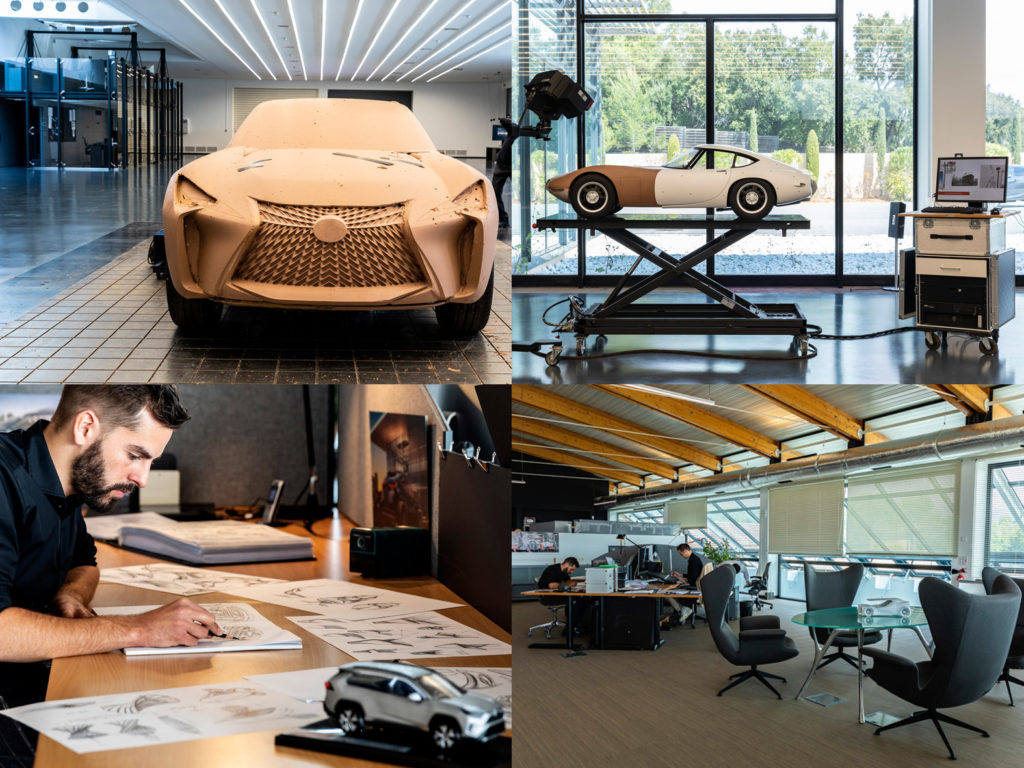
Californian Ian Cartabiano leads ED2. His enthusiasm and life long passion for cars is infectious. He explained ‘there is an open, no rule policy to ideas in the studio’ and his small, but highly creative team makes a large impact on the Lexus range. He encourages the designers to ‘ have the courage to stand out and defy convention’ and to ‘do what ever it takes’, although looking around the studio littered with scale models and piles of material samples, it appears most innovations actually start with humble pencil and paper. Designers sketch out ideas, reworking again and again every nip and tuck of the sweeping exterior and every minute detail of the interior. These concepts are transferred to 3D digital modeling where the designers can move around and even sit in, virtual cars using VR goggles. The chosen designs developed with physical mockups using 3D printing and the hands of craftsmen sculpting clay models.
Every car on the road, Lexus or otherwise, has been designed, although some may appear not to have moved far from the lump of clay the designers started with. Few are given the meticulous care and attention the Lexus design team lavish every inch of their cars. A process which they call L Finesse, it’s as much about the Japanese, Takumi – skilled artisan craftsmen – as it is about the whole experience of the car. From approaching it, opening the door, driving and then leaving.
A full size concept, reimagining the new UX sits under spotlights in the conference hall demonstrates how far the designers’ imaginations can push the limits of a car while respecting Lexus values. There is a harmony of materials and like Japanese architecture, these are used to blur the boundaries between inside and out as the forms and finishes flow together around and through the car. The front seats are constructed with a light lattice of leather straps woven over an open framework, somewhat even opening the boundary between the back and front of the interior usually created with solid seats.
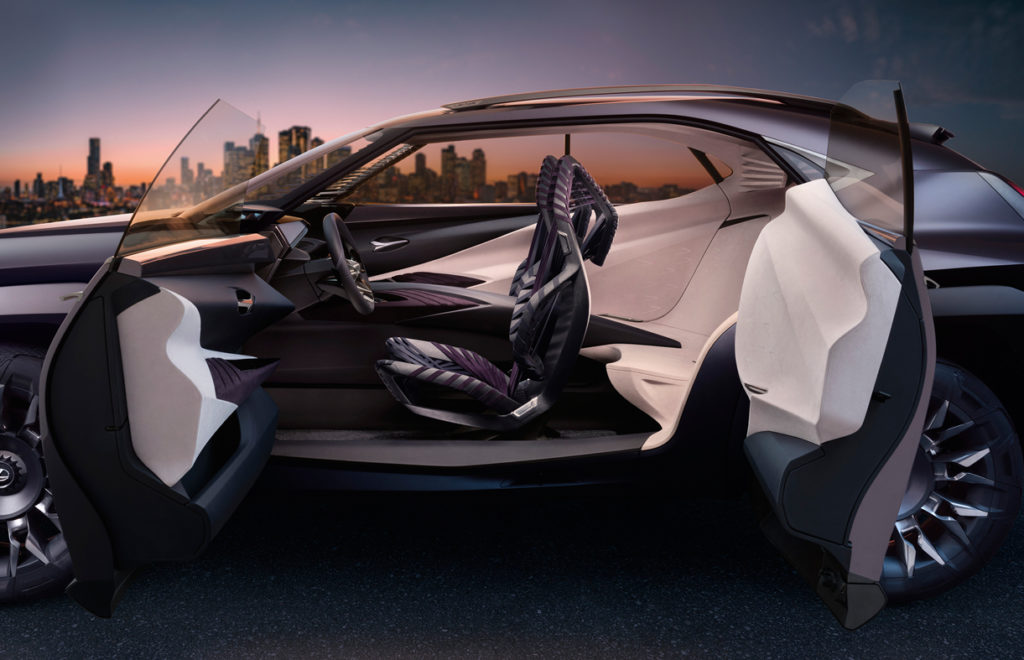
Lexus Design Awards
The Lexus Design Awards, first launched in 2013, is an international design competition aimed at up-and-coming creative talent with a vision of design for a better future. A panel of judges whittle down the entries to a short list of 6 finalists who receive mentoring help to develop their projects.
This year was internationally acclaimed architect, Sir David Adjaye’s second year on the judging panel, a role he really enjoyed, ‘I’m always keen to get to the moment where the judges get to discuss what this is about, it’s always a great debate. This year I think the harmony is very visible. The judges have been pushing a sort of consciousness about the built environment and world concern. It’s definitely something that we believe in and it’s something we think that Lexus should be in front of.’
The six short listed projects were very different but had an underlying common connection. They ranged from harvesting energy from planes taking off and window blinds that gathered solar power to turning desert sand into a building material and a modular housing system designed to withstand natural disaster.
Judge, technologist John Maeda told us, ‘I really enjoyed it this year. It was a hard decision, we had a great deliberation, a lot of good healthy debate and I’m excited about the winner. What links the 6 finalists is craft, technology and humanity.’
The winner was announced at Milan Design Week where the prize was awarded to American industrial designer, Lisa Marks for her Algorithmic Lace. Lisa uses computer algorithms to design beautifully delicate lace patterns, which are worked up to make bras by highly skilled but endangered communities of traditional lace makers for women who have had mastectomies. The algorithms adjust the pattern for each woman creating a perfect fit and an illusion of symmetry.
Chatting at the awards, John Maeda shared his thoughts on design, ‘car design is changing – what I like is that we are now seeing that car design isn’t about the car, it’s about the city’.
Sir David Adjaye – who includes a Lexus on his car CV – gave an incite into his own approach to design, ‘Work is never visual, its always research and performance based. To find new beauty and new form you can’t go in to it thinking of what it is already, because if you go in premeditated it basically becomes an image of something you already know. If you start a design thinking of what it will be then you are redoing a version of somebody else’s works because inevitably it’s about a collection of images in the mind, of experiences, it’s not a process that creates something new. I’m always concerned with this idea of process driving the end result because it brings out something that you hadn’t pictured. This can be applied to all design, from a building to a car.’
Lexus – lexus.co.uk
Lexus Design Awards – discoverlexus.com/experiences/lexus-design-award-2019
Share article with:
Related articles which maybe of interest
© By The Sky Design 2024
